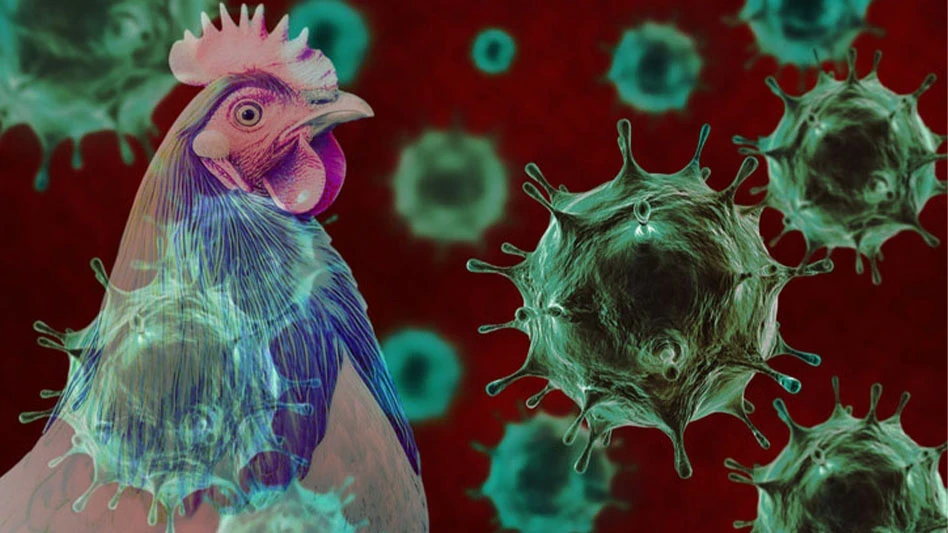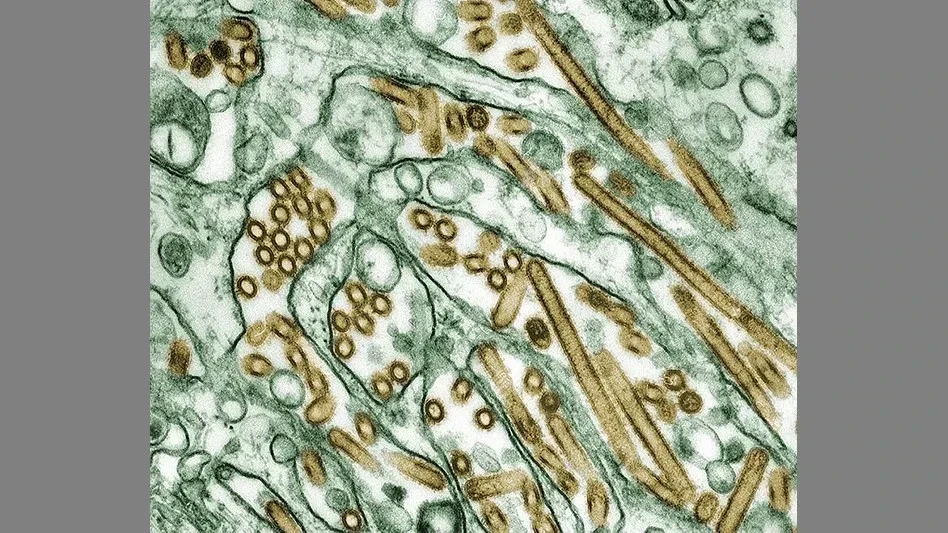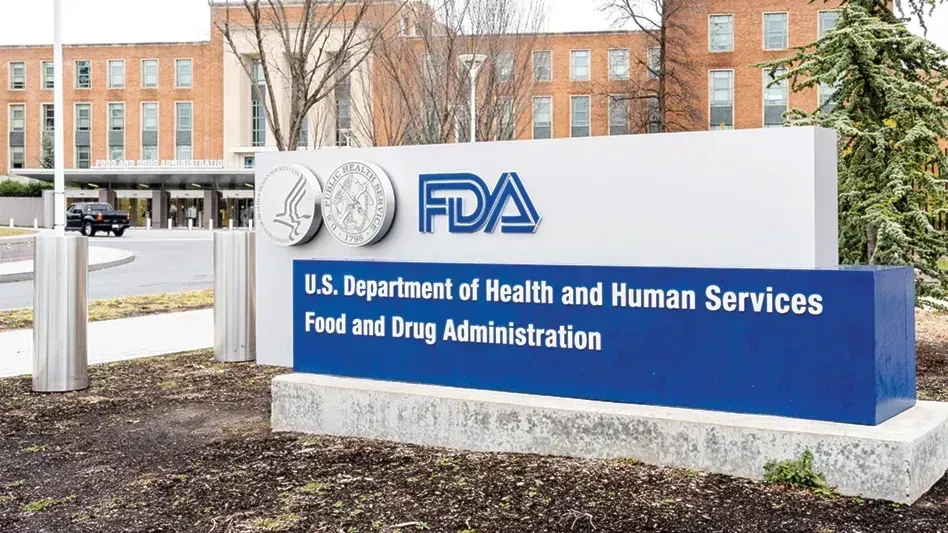 In recent years, foodborne illness caused by Listeria monocytogenes has increased significantly in the U.S. L. monocytogenes, an opportunistic pathogen, is a major concern especially for the meat, fresh produce, and dairy industries.
In recent years, foodborne illness caused by Listeria monocytogenes has increased significantly in the U.S. L. monocytogenes, an opportunistic pathogen, is a major concern especially for the meat, fresh produce, and dairy industries.
Of the six Listeria species only L. monocytogenes is known to cause disease in humans. Listeria is a very common bacteria that can be found almost anywhere in the environment including soil, water, and vegetation. It has been associated with ready-to-eat deli meats, hot dogs, poultry, uncooked vegetables, fruits such as cantaloupes, pasteurized and unpasteurized milk, foods made from raw milk, and raw sprouts; and it has been found on the surfaces of equipment, floors, drains, and walls. Unlike many other foodborne pathogens, Listeria can survive under low-oxygen conditions and can grow even in the refrigerator.
Although impossible to fully describe an effective Listeria control program in this short article, there are a few core strategies that will help control Listeria in your plant. It is important to understand and implement multiple control measures as no single step or intervention will be sufficient to eliminate or control Listeria risk in a given food processing environment. Food safety plans based on a good risk assessment are critical in helping to identify microbial risks and potential management strategies.
Design, Construction, and Operation of the Plant.
Good hygienic design and construction at an appropriate location is necessary to establish a sound microbial control program. It is important to separate areas where ready-to-eat foods are processed, exposed, and stored from areas where raw foods are processed, as well as from equipment washing areas, in-house microbiological laboratories, maintenance areas, waste storage areas, and toilets. Use of appropriate construction materials also plays an important role in minimizing cross-contamination. Food plants should be designed and constructed in a way that prevents standing water from accumulating in or around drains. Drains also should be easily accessible for proper cleaning.
 Further, it is critical to train every employee on cGMPs and Listeria preventive control measures to reduce potential contaminants that can come from the air, aerosols, employee traffic, and equipment. It is highly recommended that employees receive ongoing training and that additional training is provided to current and new employees on the cGMPs for production, new equipment, environmental monitoring, and sanitary practices as needed to ensure all are up to date.
Further, it is critical to train every employee on cGMPs and Listeria preventive control measures to reduce potential contaminants that can come from the air, aerosols, employee traffic, and equipment. It is highly recommended that employees receive ongoing training and that additional training is provided to current and new employees on the cGMPs for production, new equipment, environmental monitoring, and sanitary practices as needed to ensure all are up to date.
Sanitation.
To minimize and control Listeria contamination in a ready-to-eat food establishment, it is important to establish and implement a written sanitation standard operating procedure (SSOP) and sanitation maintenance schedule. Further, the written SSOP should be readily available to personnel who are responsible for cleaning, sanitizing and monitoring. The written SSOP should address:
- Time and frequency of cleaning.
- List of contact surfaces and equipment to be cleaned and associated dedicated brush/scrubber.
- Procedure to disassemble equipment if applicable.
- Time/temperature of cleaning solutions, concentration of cleaning compounds, and sanitizers.
- Flow rate or pressure of cleaning solution.
- Procedures to clean soil and other debris from floors.
- Procedures to remove excess water from floors, etc.
Sufficient care should be taken while assembling cleaned and sanitized equipment. For example, the equipment should not be placed directly on the floor. It is recommended that the facility have separate, dedicated systems for cleaning the equipment of ready-to-eat and raw food products to avoid potential cross contamination. If separate clean-in-place systems are not available, it is highly recommended that an alkaline cleaning solution at or above 160°F be used.
Environmental Monitoring.
It is critical to monitor and collect environmental samples on both food-contact and nonfood-contact surfaces (e.g., drains) in a food manufacturing facility for the production of safe food products. An environmental monitoring program (EMP) should be carefully designed after evaluating a facility and its products. An effectively implemented EMP will assess the overall hygiene program in a facility and provide information to prevent possible microbial contamination of finished products. The EMP provides valuable data (source and concentration) on indicator organisms in a timely manner so that appropriate corrective action can be initiated.
Many people have misconceptions about EMP. The EMP is not designed to validate the effectiveness of cleaning and sanitizing methods, but is more focused on validating cleaning and sanitizing frequencies, and other Good Manufacturing Practices (21 CFR).
 For L. monocytogenes, the environmental monitoring program should focus on an indicator organism, such as Listeria spp. which are non-pathogenic, and more easily detectable than a target pathogen L. monocytogenes. If the EMP results indicate a trend toward an increased incidence of Listeria spp., then the plant’s management should investigate to determine the reason(s) for the increase and should take appropriate corrective actions to reduce or eliminate Listeria spp. Additionally, food-contact surfaces may be sampled routinely for Listeria spp. to verify effectiveness of preventive controls. An effectively implemented EMP will act as an early warning system for Listeria spp. or L. monocytogenes in both the production and post-production environment.
For L. monocytogenes, the environmental monitoring program should focus on an indicator organism, such as Listeria spp. which are non-pathogenic, and more easily detectable than a target pathogen L. monocytogenes. If the EMP results indicate a trend toward an increased incidence of Listeria spp., then the plant’s management should investigate to determine the reason(s) for the increase and should take appropriate corrective actions to reduce or eliminate Listeria spp. Additionally, food-contact surfaces may be sampled routinely for Listeria spp. to verify effectiveness of preventive controls. An effectively implemented EMP will act as an early warning system for Listeria spp. or L. monocytogenes in both the production and post-production environment.
Some common components that should be included in the EMP program are: environmental monitoring team, zoning concept, sampling time and frequency, selection of indicator or pathogenic microorganisms, sampling tools, labeling and shipping, baseline/target, trends and corrective actions, and mapping.
Conclusion.
Despite improvements in production, handling, and distribution of food products in recent years, protecting consumers from listeriosis still remains a challenge. An effective pest control program must be implemented throughout the processing facility to eliminate potential pests such as insects, birds, rodents, etc. that may act as potential vectors for a variety of bacterial pathogens including Listeria. A process validation or kill-step validation that is intended to deliver some degree of lethality is important to achieve food safety. The success of any Listeria control program depends on an effective HACCP/HARPC plan, a good hygienic design, cGMPs, sanitation program, employee hygiene practices, pest control program, EMP, and good hygiene post-process handling procedures.
For more information about controlling L. monocytogenes in food processing establishments, and environmental monitoring programs, reference the FSIS compliance guideline or FDA’s Listeria guidance for industry, or contact an experienced commercial microbiology firm.
The author is Director, Microbiology, AIB International.
Latest from Quality Assurance & Food Safety
- Penn State Course Covers Fundamentals of Food Science
- Joint FAO/WHO Expert Committee on Food Additives Seeks Experts
- FDA Reschedules Webinar on Updated ‘Healthy’ Claim
- Thousands More Laid Off at FDA, CDC in HHS Restructuring
- USDA Extends Deadline on Request for Information for Poultry Quality Standards
- Dessert Holdings Issues Allergy Alert on Undeclared Pecans in Favorite Day Cheesecake
- Idaho Smokehouse Partners Recalls Beef Sticks Due to Possible Foreign Matter Contamination
- IDFA Leadership Symposium Set for June 23-26





